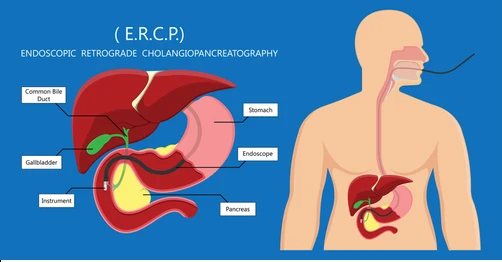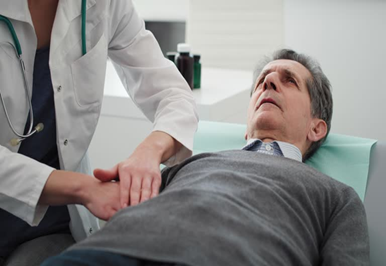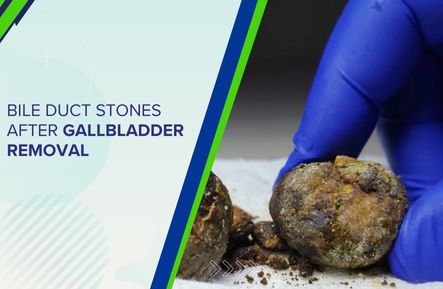Gallbladder removal, also known as cholecystectomy, is a standard surgical procedure performed to treat gallstones or gallbladder dysfunction. While it significantly reduces the risk of gallstone formation, it doesn’t eliminate it entirely. In some cases, stones can still develop or remain in the bile ducts—referred to as residual bile duct stones or post-surgery stone formation.
Dr. Ksheetij Kothari notes that timely diagnosis and treatment are crucial to prevent complications such as bile duct obstruction or infections. He adds, “Many patients assume surgery is the final step, but in some cases, we see common bile duct stones even months or years after gallbladder removal.”
Dr. Ksheetij Kothari is a highly regarded gastroenterologist in Pune, recognized for his advanced expertise in diagnosing and treating biliary disorders through non-surgical, minimally invasive endoscopic methods, such as ERCP for bile duct stones. If you’re dealing with ongoing digestive discomfort or bile duct stones after gallbladder removal, Dr. Kothari provides comprehensive evaluations and endoscopic care focused on patient recovery and long-term health.
Can You Get Bile Duct Stones After Gallbladder Removal?

Yes, it’s entirely possible to develop bile duct stones after gallbladder removal. These stones can be either residual stones—leftover from before the surgery that were missed—or newly formed stones, referred to as post-gallbladder stone formation.
Bile duct stones, also called choledocholithiasis, are hardened deposits that form within the bile ducts. The bile duct is a channel that carries bile from the liver and gallbladder to the small intestine, aiding in digestion. Without the gallbladder, bile flows more continuously, but under certain conditions, it can stagnate (bile stasis) and form stones.
What Causes Bile Duct Stones Without a Gallbladder?
Even without the gallbladder, bile ducts can remain a potential site for stone formation. Here’s why:
- Residual Stones:
At times, stones are preoperatively embedded in the bile duct but not noticed during the operation.
- Bile Stasis:
Lacking a gallbladder for the control of the release of bile, the bile may clog and pool up in the ducts and form stones.
- Bile Composition Changes:
After cholecystectomy, the bile might get concentrated and this could increase the risk of crystallization.
- Infections:
Recurring bile duct infection or inflammation may facilitate the formation of stones.
- Strictures or Scarring:
Postoperatively, scarring or narrowing of the ducts may result in sluggish bile flow, leading to stone formation.
Symptoms of Bile Duct Stones That Form After Gallbladder Removal

Signs of common bile duct stones consist of:
- Abdominal Pain: Especially in the upper right or middle abdomen, often severe and cramping.
- Jaundice: Yellowing of the skin and eyes due to bile duct obstruction.
- Fever and Chills: Could indicate infection of the bile ducts (cholangitis).
- Nausea and Vomiting: Especially after fatty meals.
- Dark Urine and Pale Stools: Caused by impaired bile flow.
- Persistent Digestive Issues: Indigestion, bloating, or unexplained discomfort post-surgery.
Ignoring these symptoms may lead to serious complications such as pancreatitis or bile duct infections.
Treatment Options for Bile Duct Stones
Dr. Ksheetij Kothari recommends these modalities of treatment by size, location, and number of stones:

A highly technical endoscopic procedure in which bile duct stones are removed after being identified. As one of the specialists in ERCP for bile duct stones, Dr. Kothari performs this state-of-the-art, non-surgical technique to head off complications.
- Biliary Stenting:
A self-expanding plastic or metal stent can also be implanted in the bile duct during ERCP to have adequate drainage and minimize obstruction.
- Medication:
In rare cases, bile acid drugs can dissolve small stones, but this option is less commonly successful than endoscopic methods.
- Tracking:
For asymptomatic stones, observation with regular follow-up and imaging might be recommended.
When to Contact Your Doctor

You should see a doctor immediately if you have:
* Abdominal pain, which can be sharp or dull, spastic, or crampy
* Chills or fever
* Yellowing of the skin or eyes (jaundice)
* Vomiting or inability to digest food
* Persistent digestive symptoms after cholecystectomy
These signs may be indicative of bile duct obstruction or infection, which need immediate medical attention.
Conclusion
Though gallbladder removal reduces the incidence of stones considerably, post-gallbladder removal bile duct stones continue as a medical condition for a few. Early detection of the symptoms, the causes, and taking appropriate action at the right time prevents complications. With expertise in ERCP and minimally invasive techniques, Dr. Ksheetij Kothari, one of the best gastroenterologists in Pune, offers advanced and effective treatment options without surgery.
FAQs
What happens if bile duct stones are left untreated?
How to avoid gallstones after gallbladder removal?
What diseases can you get after gallbladder removal?
Can stress cause gallstones?
Is it common to get bile duct stones after gallbladder surgery?
Reference links:
https://www.nhs.uk/tests-and-treatments/gallbladder-removal/complications/
https://onlinelibrary.wiley.com/doi/10.1155/2012/417821
Disclaimer: The information shared in this content is for educational purposes and not for promotional use.

